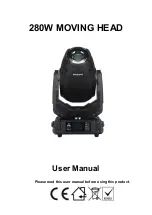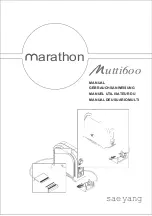
- 9 -
breaker be used for dismantling work.
Alternatively, a breaker steel gripped in a low vice may be used.
The following general precautions must be observed when servicing
hydraulic breakers
:
l
Absolute cleanliness is essential. Most hydraulic failures are
caused by the ingress of dirt.
l
Before dismantling a component, clean external surfaces and
drain all fluid.
l
When holding components in a vice, fit soft metal pads over the
vice jaws to prevent damage and distortion to precision surfaces
and bores.
l
All parts should be laid out on a clean resilient surface. Special
attention should be paid to the identification of parts and their
dismantling sequence.
l
All dismantled metal parts should be washed in a cleaning solvent
and coated with hydraulic fluid.
l
All solvent cleaners in use must be approved by the safety
management of the company where the work is being carried out
and the COSHH regulations read and understood.
l
It is recommended that all disturbed seals be renewed. If a seal is
reused, it should be closely examined for cuts, flaws or wear. A
seal that is suspect should never be reused.
l
All internal metal parts and seals should be lightly coated with
clean hydraulic oil or a lithium based no.2 grade grease before
assembly. This assists in assembly and lessens the risk of seal
damage. Use only seals provided in component service kits, which
are obtainable from Masterpac Engineering Co.,Ltd or their agents,
as these will be of a different composition and hardness to seals
normally commercially available.
Hydraulic Pipes and Hoses
When removing and replacing rigid pipes and flexible hoses the
following points should be observed:
l
Use adjustable or open-ended spanners on end connections and
fittings. Do not use pipe wrenches as these damage fittings and
protective plating.
l
Ensure the particular connection and its surrounding area is
clean.
Service Tools
Use of the correct service tools contributes to an efficient, economic



































